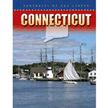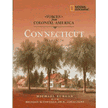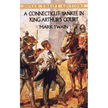CONNECTICUT
 |
| www.pdclipart.org |
Our fifth state in the Union is Connecticut. This New England state entered statehood on January 9, 1788, after the Revolutionary War when the Convention in Connecticut approved the new Federal Constitution with a vote of 128 to 40. Part of the U.S. Constitution was proposed by representatives from Connecticut and, therefore, was called the Connecticut Compromise. This became a permanent part of the Constitution and says that in the Senate all states would be represented equally and in the House of Representatives states would be represented according to their population, i.e., the more people who live there the more representatives they would have.
The postal abbreviation is CT, and the capital is Hartford (as represented by the star above). CT is the 48th biggest state, with only Rhode Island and Delaware smaller, but the 29th most populous state. There are a lot of people living in a small area. Those people are called Connecticuters. Before the arrival of the Europeans, many Native American tribes lived on this land. They were the Mahican, Minisink, Mohegan, Pequot, Nipmuc, and Quiripi tribes. Today, the Mashantucket Pequot and Mohegan are federally recognized, although there are still a few other tribes/nations still living in Connecticut. The name of the state came from the Mohican/Algonquin word, "quonehtacut." Some resources spell the word "quinatucquet." It means "long tidal river." The river is the Connecticut River which is 360 miles long and extends all the way to Vermont.
Some famous people living in Vermont are President George W. Bush, J.P. Morgan, Katharine Hepburn, Suzanne Collins (author famous for The Hunger Games), Ethan Allen, Benedict Arnold, P.T. Barnum, John Brown, Jonathan Edwards, Charles Goodyear, and Charles Tiffany. There were more famous people born here; these are just a few. I have not listed what they are known for this time. Do some research and find out why they are famous (or infamous). Some are inventors; some are entertainers of different sorts. Some are important in the history of our country.
 |
| www.pdclipart.org If considering a visit to Connecticut, there are many sites to see. Here are just a few: Audubon Greenwich - This a perfect place for bird watchers with 12 bird sanctuaries on 686 acres. Woodbury Antiques Trail - There are 30 antique dealers set up in historic houses along this road. PEZ Visitor Center - A large collection of PEZ memorabilia housed in a 4000 square foot building. Mystic Seaport - This is a recreated 19th century shipping village. Harriett Beecher Stowe Center - The house she lived in for 23 years. Hempsted Houses - Shares story of Underground Railroad Mark Twain House Revolutionary Road Nautilus - First nuclear submarine sits in Groton, Connecticut Noah Webster House View the ConneCT Kids website for puzzles and learning games. Here are some resources available though Christianbook: |
 |
Connecticut By Darice Bailer, Jackie Ball(Editor) & Kristen Behrens(Editor) / Gareth Stevens Publishing |
 |
A Primary Source History of the Colony of Connecticut - Unabridged Audiobook on CD By Ann Malaspina & Jay Snyder / Brilliance Audio Learn all about the colony of Connecticut using primary source documents in this audiobook. In 1636 the first Puritans arrived, leaving the crowded Massachusetts Bay Colony behind, seeking religious freedom and land. The smallest colony, after Rhode Island and Delaware, held promise for the colonists despite the struggles they encountered from the rocky, woody terrain. The colonists would soon discover their own government. Unabridged audio CD; approximately 1 hour 12 minutes; 1 CD; performed by Jay Snyder. |
 |
Voices from Colonial America: Connecticut 1614-1776 By Michael Burgan / Random House, Inc |
![24339DF: Connecticut State History Lapbook - PDF Download [Download] 24339DF: Connecticut State History Lapbook - PDF Download [Download]](http://ag.christianbook.com/g/thumbnail/2/24339dft.gif) |
Connecticut State History Lapbook - PDF Download [Download] By Cyndi Kinney / Knowledge Box Central Get to know your home state! Comprehensive state history lapbook resources from Knowledge Box Central are designed so that children of all ages can study together. Explore state symbols, songs and landmarks, famous people, geographical regions, timelines of historical events, and more. The included state-specific study guide provides background information, history, and other factual information; this study guide is the same for both lapbook (Grades K-8) and lapbook journal (Grades 6-12) students, so that the parent only needs to go over the information once. This lapbook includes a list of all the supplies needed if following the included base guide. Blackline masters are provided for students to cut out and paste into their lapbook, while a photo of a finished lapbook provides a visual example. This Lapbook is structured for use with K-8th Grade Students. No more using up printer supplies with this pre-printed laptop resource; simply cut out and assemble, and you're ready to write! |
![24338DF: Connecticut State History Lapbook Journal - PDF Download [Download] 24338DF: Connecticut State History Lapbook Journal - PDF Download [Download]](http://ag.christianbook.com/g/thumbnail/2/24338dft.gif) |
Connecticut State History Lapbook Journal - PDF Download [Download] By Cyndi Kinney / Knowledge Box Central Get to know your home state! Comprehensive state history lapbook resources from Knowledge Box Central are designed so that children of all ages can study together. Explore state symbols, songs and landmarks, famous people, geographical regions, timelines of historical events, and more. The included state-specific study guide provides background information, history, and other factual information; this study guide is the same for both lapbook (Grades K-8) and lapbook journal (Grades 6-12) students, so that the parent only needs to go over the information once. This Lapbook Journal is structured for use with 6th-12th grade students, and includes not only the standard six lapbook booklets, but also journal pages to complete. The booklets may be either glued to the last two pages, or, students may also choose to not complete the booklets, but rather incorporate the information in the state report. No more using up printer supplies with this pre-printed laptop resource; simply cut out and assemble, and you're ready to write! |
 |
A Young Partiot: The American Revolution As Experienced By One Boy By Jim Murphy / Houghton Mifflin Harcourt In the summer of 1776, Joseph Plumb Martin was a fifteen-year-old Connecticut farm boy who considered himself "as warm a patriot as the best of them." He enlisted that July and stayed in the revolutionary army until hostilities ended in 1783. Martin fought under Washington, Lafayette, and Steuben. He took part in major battles in New York, Monmouth, and Yorktown. He wintered at Valley Forge and then at Morristown, considered even more severe. he wrote of his war years in a memoir that brings the American Revolution alive with telling details, drama, and a country boy's humor. Jim Murphy lets Joseph Plumb Martin speak for himself throughout the text, weaving in historical background details wherever necessary, giving voice to a teenager who was an eyewitness to the fight that set America free from the British Empire. |
 |
A Connecticut Yankee in King Arthur's Court By Mark Twain / Dover Publications In this classic satiric novel, published in 1889, Hank Morgan, a supervisor in a Connecticut gun factory, falls unconscious after being whacked on the head. When he wakes up he finds himself in Britain in 528--where he is immediately captured, hauled back to Camelot to be exhibited before the knights of King Arthur's Round Table, and sentenced to death. Things are not looking good. But Hank is a quick-witted and enterprising fellow, and in the process of saving his life he turns himself into a celebrity of the highest magnitude. His Yankee ingenuity and knowledge of the world beyind the Dark Ages are regarded as the most powerful sorcery--winning him the position of prime minister as well as the eternal enmity of a jealous Merlin. In an effort to bring democratic principles and mechanical knowledge to the kingdom, Hank introduces newspapers, telephones, bicycles, and other modern conveniences to the Britain of the Dark Ages. But when he tries to improve the lot of the common people, chaos and war result, giving a bittersweet to end to this comic masterpiece by one of America's greatest storytellers. Unabridged. |
